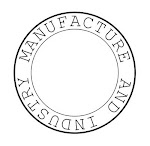
Following the recent launch of the government's Make it in Great Britain campaign, I had the opportunity to ask manufacturing minister Mark Prisk a few questions about the initiative and UK manufacturing in general:
M&I: Is the future of UK manufacturing based on premium products?
MP: People look to Britain and see the expertise and quality of the goods we produce, from Rolls-Royce aircraft engines to Sunseeker yachts. However it should also be said that there is huge diversity in manufacturing, with both premium and standard products proving successful.
Manufacturing contributes £140bn pa to UK economy. We make everything from biscuits and stairlifts, to ejector seats and off-road vehicles, so we really want to celebrate that diversity and show off our successes. Only by doing that will we inspire young people to be our inventors, engineers and technicians of the future.
M&I: Do you think the definition of manufacturing needs to be reconsidered?
MP: I don't think it's about re-defining manufacturing, it’s more about highlighting what modern manufacturing is all about. We have some world leading British manufacturers, from the aerospace and marine sectors through to food and drink manufacturing, but we need to highlight these successes. That is the role of the Make it in Great Britain campaign; and for that matter the Queen Elizabeth Engineering Prize, which the Prime Minister announced last week, and our See Inside Manufacturing initiative - they all have a vital part to play in our long term plan for British manufacturing.
M&I: Recently there have been a couple of 'Made in the UK' logos launched. Do you see a need for an official badge for items made here?
MP: I don't see it as Government's role to tell people what logos they should use on their products.
What I want to do is help people in the UK to take a fresh look at manufacturing and to appreciate the scale and excellence of our industry. My focus is to overturn the myth that 'we don't make anything any more' and to champion the exciting reality of British manufacturing today.
-
Image of Rolls-Royce factory workers from Design Talks















